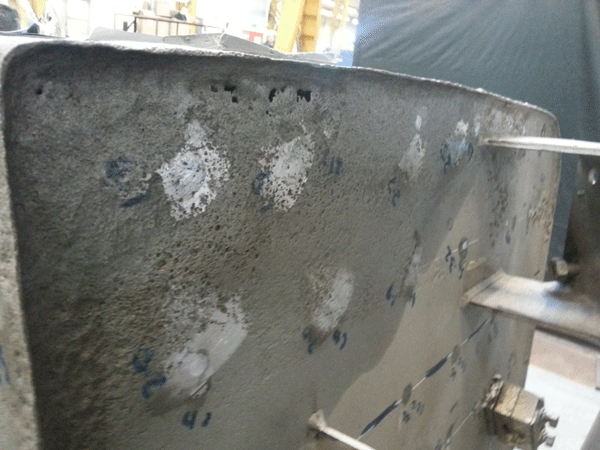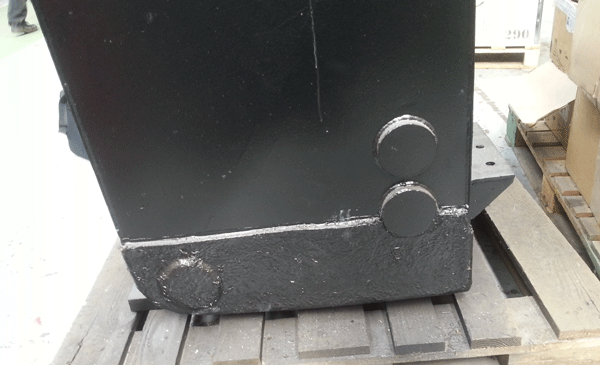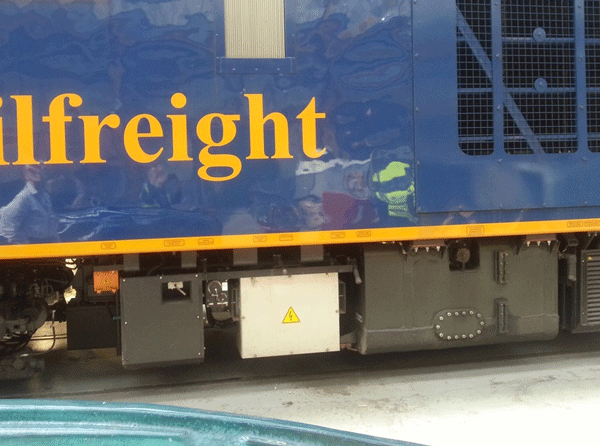It was early 2015 when a U.K.-based company specializing in the restoration of dilapidated trains (Figure 1) identified a recurring problem with metal corrosion in diesel tanks.
The train refurbishment process for the company involves dismantling the trains to conduct repair and maintenance before repainting and returning them to a like-new condition. This provides both a cheaper alternative to purchasing a new train and extends the life-cycle of many abandoned diesel-electric freight trains.
That efficiency is of particular importance in the United Kingdom, where the vast majority of trains on U.K. railway networks have been in operation since the late 1960s or early 1970s. Some trains have been stored in sidings for up to 40 years, allowing the effects of vegetation and corrosion to take a toll.
Specifics of the Diesel Tank Problem
Originally, the undersides of all diesel tanks on this particular system were covered with fiberglass, which served as a protective barrier against sparks flying up from the tracks.
But over time, moisture entered the gaps between the fiberglass and the steel tanks, leading to corrosion of the metal. In some cases, this would appear in the form of pitting or holes (Figure 2).

The initial repair method attempted by the restoration company involved grit blasting the fiberglass away from the diesel tanks and welding steel plates over the weakened areas. However, subsequent pressure testing revealed that welding was causing further cracks or weaknesses in the steel around the various heat-affected zones (HAZ).
Those weaknesses were compounded further by additional weld repairs and pressure tests, which proved to be both time consuming and expensive.
Cold-Bonding Offers Enhanced Solution
The company found that it needed a cold-applied solution to repair the defects, thus ensuring that further damage from hot work would not compromise or delay the repair process.
After consultation, the Belzona 1121 (Super XL-Metal)† polymeric material from Belzona (Harrogate, United Kingdom) was selected as an appropriate technology to restore the diesel tanks to working condition.
The material is a two-part composite for metal repair and resurfacing based on solvent-free epoxy resin reinforced with silicon steel alloy. The repair material is designed to offer extended working life, particularly for large applications where greater volumes of material are required or adequate working time at higher temperatures is needed.
The repair material will not corrode, according to the manufacturer, which adds that it also resists a wide range of chemicals. With a working life of ~35 min at room temperature, the material can be mixed and applied without specialist tools, and the mechanical curing time is one day.
For the repairs, the diesel tanks' surfaces were prepared before metal plates were cold-bonded onto the damaged steel. With application and curing done at room temperature, the material offered the restoration company a corrosion-resistant solution that eliminated the threat of HAZ and enabled the tanks to pass the pressure tests the first time, thus saving time and costs related to extended testing.

Each repair was then coated with glass-fiber reinforced plastic (FRP) and painted black (Figure 3), in line with the remainder of the tank.
“The customer was satisfied with the speed of the process in comparison to their traditional repair method,” says Belzona’s Tom Belli. “This allowed the repaired tanks to be refitted onto the trains far quicker, while also offering a long-term solution for their initial problem.”
Belli adds that the repair material is now incorporated into the customer’s authorized specification for all diesel tank repairs, and is an official company-approved repair method.
Back in Service
Once the application, curing, and coating processes were complete, the repaired diesel tanks were then fitted onto the refurbished trains (Figure 4) and placed back into service.

With budgets around the world facing constraints, Belli notes that the model adopted by the U.K. restoration company could easily be replicated in other countries and by other industries. Rather than build entirely new assets, a cheaper and more efficient alternative is to extend the life of existing fleets—so long as a suitable solution for corrosion is used.
“Polymeric cold-bonding techniques such as these have been used throughout industry, completing applications in environments from mining to oil and gas,” Belli says. “Regardless of the type of machinery and equipment or buildings and structures, polymeric materials have provided solutions.”
Source: Belzona Polymerics, Ltd., belzona.com. Contact Tom Belli, Belzona—e-mail: tbelli@belzona.com.
†Trade name.